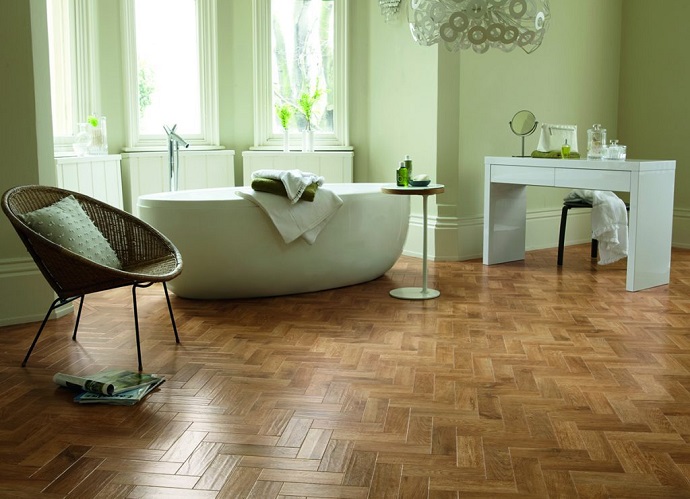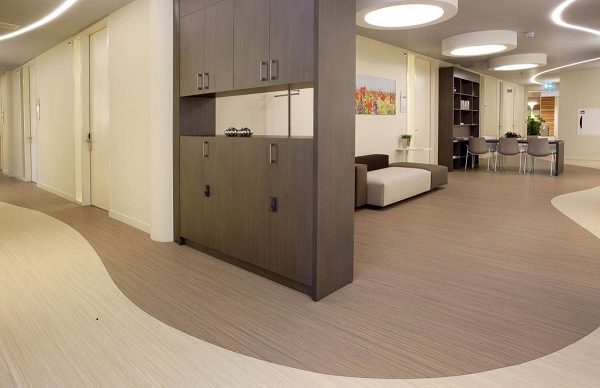No matter if it’s a hospital, an aged care facility, a diagnostics laboratory, or any other healthcare establishment, we’re sure that the safety and security of the patients, residents, and employees is priority number one. Everything else comes after that.
There’s a lot that goes into making such a facility a safe haven for those inside, whether they’re employees or otherwise, from furniture and lighting to things like decor, walls, and flooring. It may not seem that way, but flooring is actually one of the most important safety traits you need to think about when a healthcare facility is in question. Patients and residents are there for a reason, so having flooring that will prevent any accidents is of utmost importance.

You can’t put just any old flooring in a healthcare facility and call it a day. No matter how good it looks, your priorities should lie elsewhere. Luckily, specialised healthcare flooring exists and it’s the perfect mix between safety, durability, and style, rendering it the optimal option for your facility. When buying healthcare flooring, you’ll need to pay attention to some details so as to make sure you’re making the right decision. Here’s what you need to know!
Vinyl Is the Best Material for Healthcare Flooring
Flooring for healthcare facilities can come in many materials, but in our opinion, vinyl is probably the best choice you can make.
Healthcare facilities, no matter their type, are usually busy places where many things happen and many people pass through during a single day, so having a floor that’s durable enough to take this day to day and still last for years is imperative.

Vinyl flooring can really take on the daily challenges a healthcare facility faces. Manufacturers keep everything in mind, making sure their flooring can take the hypothetical heat and provide safety of movement, durability, and most importantly – easy cleaning and maintenance, which in healthcare facilities is of utmost importance.
Compared to tile, for example, which is another popular choice for healthcare flooring, vinyl is still the better choice. While tiles are easy to clean and maintain and can be specially treated to make them as non-slip as possible, there are still circumstances where they fall short.
For example, their “shelf life” is lower than that of vinyl and they can be prone to cracking, especially if heavy objects accidentally fall on them, making them a hazard instead of a safety element in the facility. Furthermore, while tiles can be non-slip, there are many instances where that feature can fall short in areas such as bathrooms where soap and shampoo are a regular thing and can be easily spilt.
Lastly, tiles can get damaged by day-to-day use and maintenance and can lose their colour and shine, something that vinyl flooring doesn’t have any issue with.
Look for Features That Can Ensure a Safer Environment
As we mentioned before, healthcare facility floors need to be specially treated and offer safety in situations regular flooring can fall short. Manufacturers know this and keep it in mind, and when producing their vinyl healthcare flooring, they make sure different options are available to help tackle any obstacle.
For example, there are non-slip options that can hold their ground even in situations like the one we talked about before. Specially coated, not only are they non-slip when water is involved, but they are also very good at staying non-slip when soap, shampoo, body lotion, or any other liquid is spilt. They handle the combination of water and any of the aforementioned products as well.

Furthermore, the non-slip function works well when people have shoes on and also when they don’t. This makes it great for bathrooms and common areas! Another great feature of vinyl flooring is the fact that it’s very easily cleaned given that it doesn’t have any crevices to worry about.
To wrap up the features department, vinyl flooring comes in stud-free options, which makes it perfect for older and sick people, as they don’t have to watch where they step! This is a feature that works really well for any part of the space.
Don’t Overlook Design!
And finally, after all the more technical intricacies, we land on the design! It’s very important to understand that, even though your facility is part of the medical field and is a serious establishment, it doesn’t have to look sterile even though it is!
Flooring can really help avoid this effect and create a more friendly, cozy space for both patients or residents and employees. Everybody likes spending time in a nice environment. Hospitals and care facilities are very hard for people sometimes, so adding a bit of character and fun into them can really bring people’s spirits up and make them handle the medical aspect a bit better!

Vinyl flooring comes in many different colour options, which can be great for parts of the facility that tend to children, as well as options that mimic wood, which can be a comfortable solution for common areas and hallways in nursing homes.
There are patterned designs available as well, which is a very interesting feature, especially because patterns that tend to people with dementia are being made, which can really come in handy in facilities that tend to these types of patients.
To Conclude
Once you have the flooring taken care of, you’re free to spruce up your facility any way you see fit! The specialized floors we talked about will really aid in keeping things clean and safe and will set the mood for further additions to make everything as pleasant as possible.
Include decor items, nice, soft furniture, different hanging plants, and innovative lighting options to set the mood you’d like your facility to give off, tho don’t compromise safety and cleanliness! Remember, they always come first!
As we said in the beginning, no matter how good something looks, your priorities should lie elsewhere!



